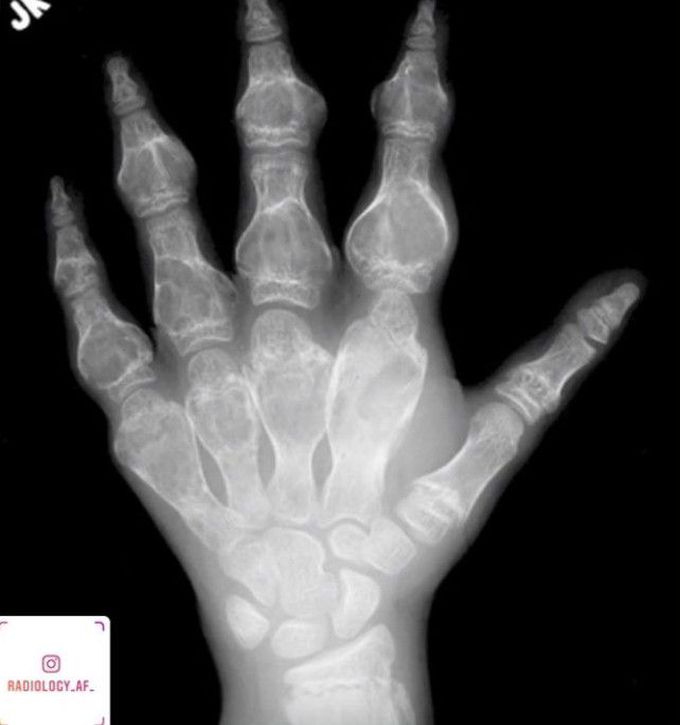


OLLIER DISEASE
Ollier disease, also called dyschondroplasia is a rare skeletal disorder characterized by abnormal bone development (skeletal dysplasia). It manifests as abnormal noncancerous, cartilaginous masses (enchondromas) in the long bones of the legs and arms so that growth is abnormal and the cortical layer of the bone becomes thin and more fragile. It primarily affects the long bones and cartilage of the joints of the arms and legs, specifically the metaphyses of long bones. The pelvis is often involved; and more rarely, the ribs,sternum, and skull may also be affected. It may be congenital and becomes apparent in early childhood when symptoms such as deformities or improper limb growth are more obvious. Methods of diagnosing Ollier disease include bone biopsy, x-rays, MRI and recording of internal body images through tomography. Surgical correction of deformities of the affected limb has proved to be helpful. In severe cases, prosthetic joint replacement may become necessary. Credits: https://rarediseases.org/rare-diseases/ollier-disease/#:~:text=Ollier%20disease%20is%20a%20rare,limb%20growth%20are%20more%20obvious. https://www.instagram.com/p/CJ3Rp_tAHKf/?igshid=d52z3ctfuamp

